Natural Convection Solar Chimney, ANSYS Fluent Training
$80.00 $40.00 Student Discount
- The problem numerically simulates the solar chimney using ANSYS Fluent software.
- We design the 3-D model with the Design Modeler software.
- We Mesh the model with ANSYS Meshing software.
- We perform this simulation in a steady state.
- The gravity (buoyancy effect) is considered in this simulation.
To Order Your Project or benefit from a CFD consultation, contact our experts via email (info@mr-cfd.com), online support tab, or WhatsApp at +44 7443 197273.
There are some Free Products to check our service quality.
If you want the training video in another language instead of English, ask it via info@mr-cfd.com after you buy the product.
Description
Natural Convection Solar Chimney Project Description
In this project, a solar chimney’s natural convection has been simulated by ANSYS Fluent software. The main goal of this project is the investigation of natural convection considering buoyancy force. A solar chimney is a type of passive solar heating and cooling system that can be used to regulate the temperature of a building as well as provide ventilation. Like a Trombe wall or solar wall, solar chimneys are a way to achieve energy-efficient building design. Essentially, solar chimneys are hollow containers that connect the inside part of the building to the outside part of the building.
The geometry of this project has been created using ANSYS Design Modeler software and its mesh has been created by ANSYS Meshing Software. This mesh type is structured and its cell numbers are equal to 510000.
This CFD project is the 2nd episode of the Heat Transfer Training Course.
Natural Convection Solar Chimney Methodology
The energy equation is enabled in this simulation to compute the temperature changes and simulate the heat transfer. The gravity effect has enabled us to consider the buoyancy force as an important force in natural convection. Also, we have considered an absorber for this chimney with a heat flux equal to 55 W/m^2.
Natural Convection Solar Chimney Results
After the solution was completed, the velocity, pressure, and temperature contours were obtained. Velocity vectors and flow lines were also drawn. The results clearly show that natural convection heat transfer has occurred in this problem. From the vectors and flow lines, it is clear that the buoyancy force showed its effect well and the dominant force in heat transfer was natural. Also, the mass flow rate at a height of 0.5 meters was obtained, which was equal to 0.128 kg/m3.
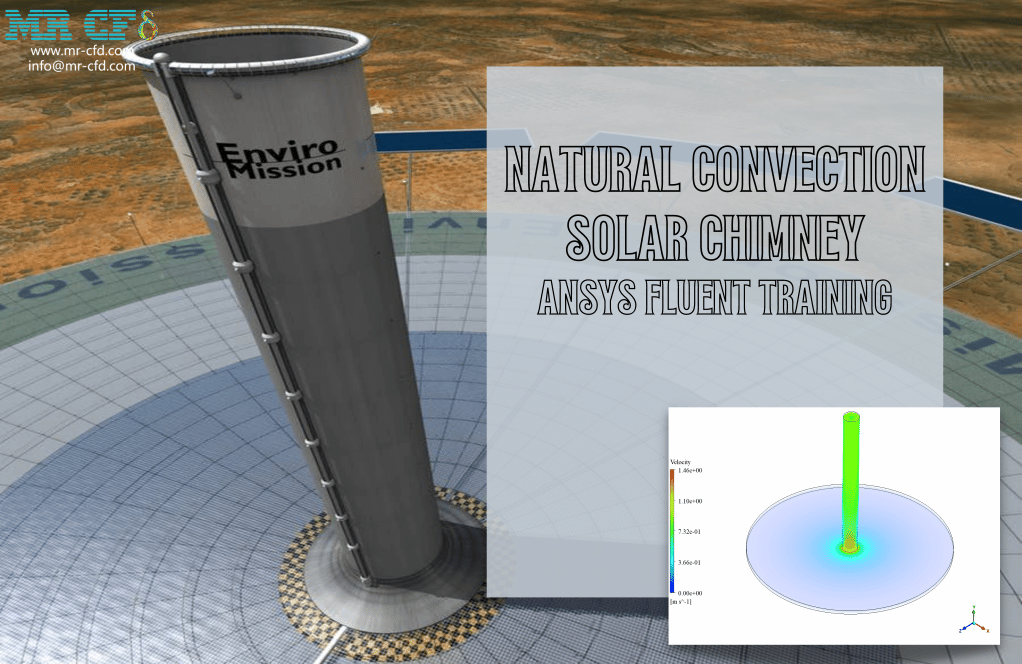
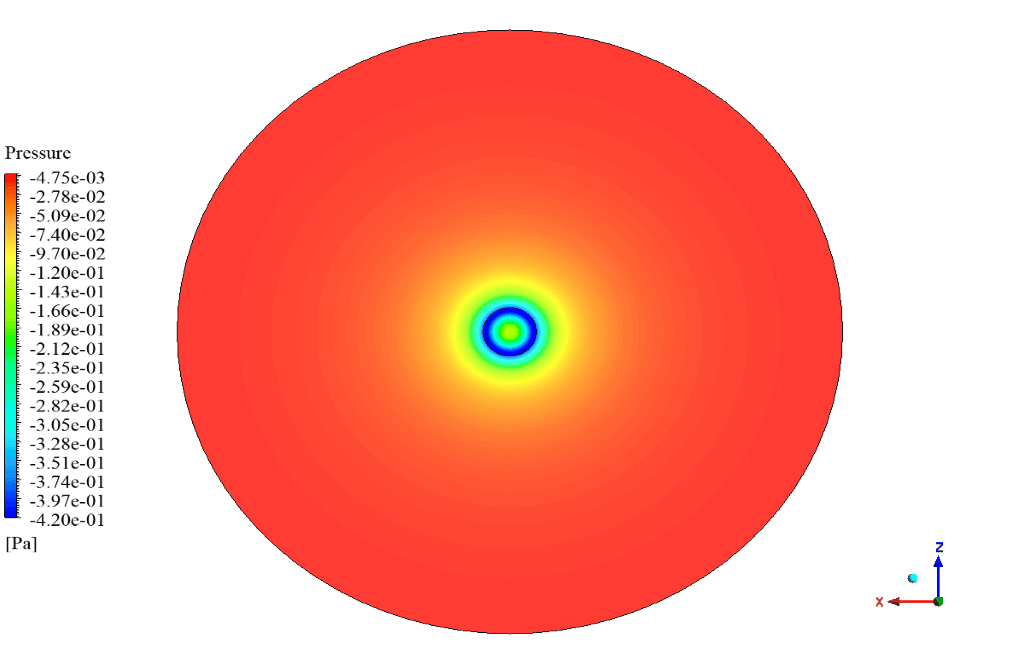
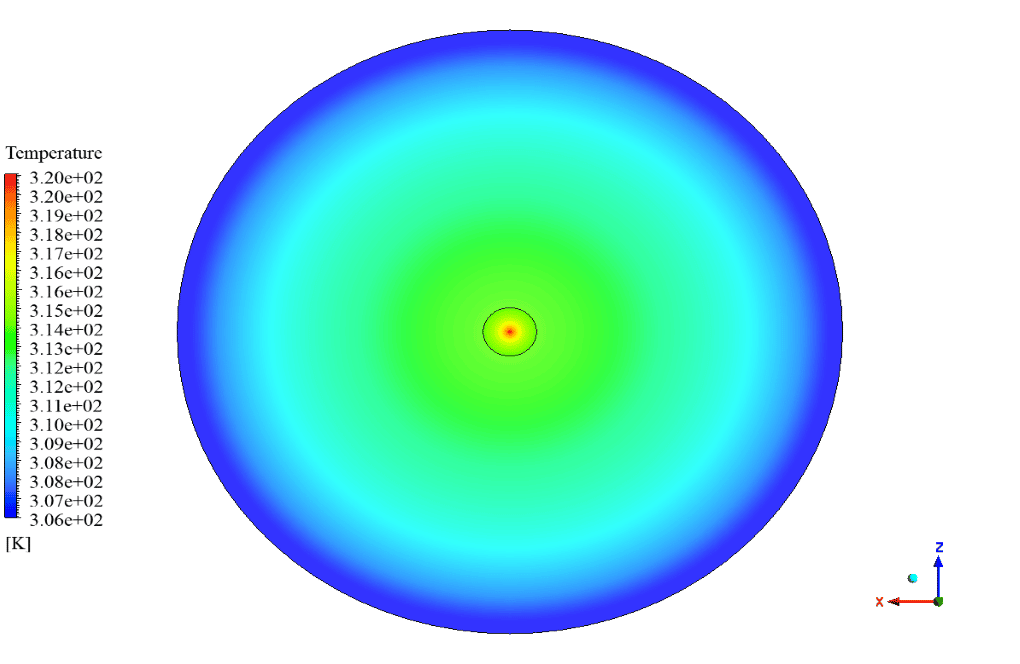

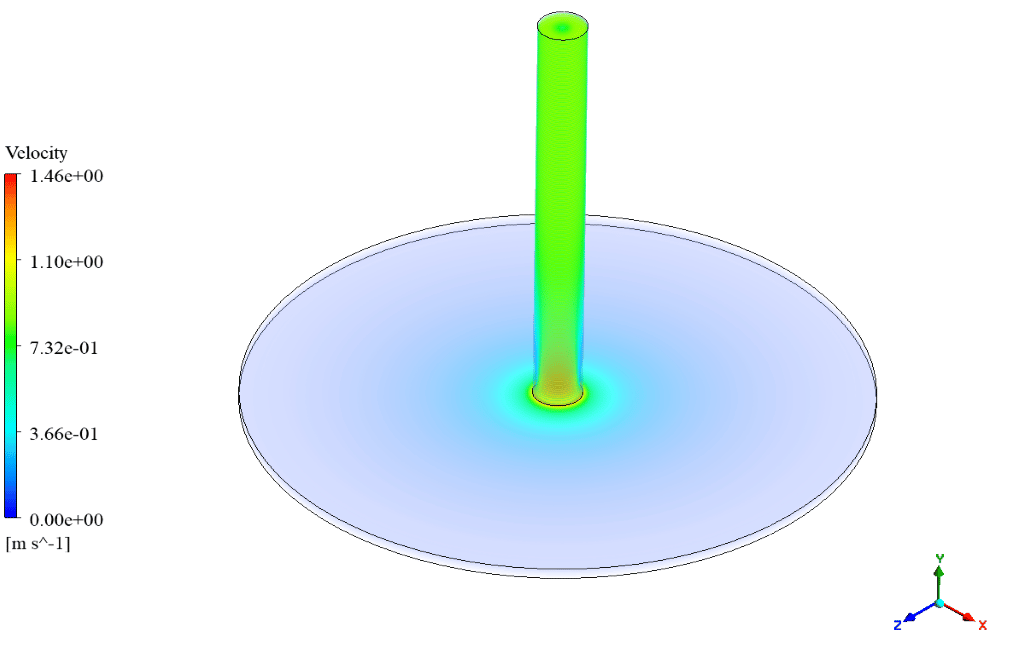
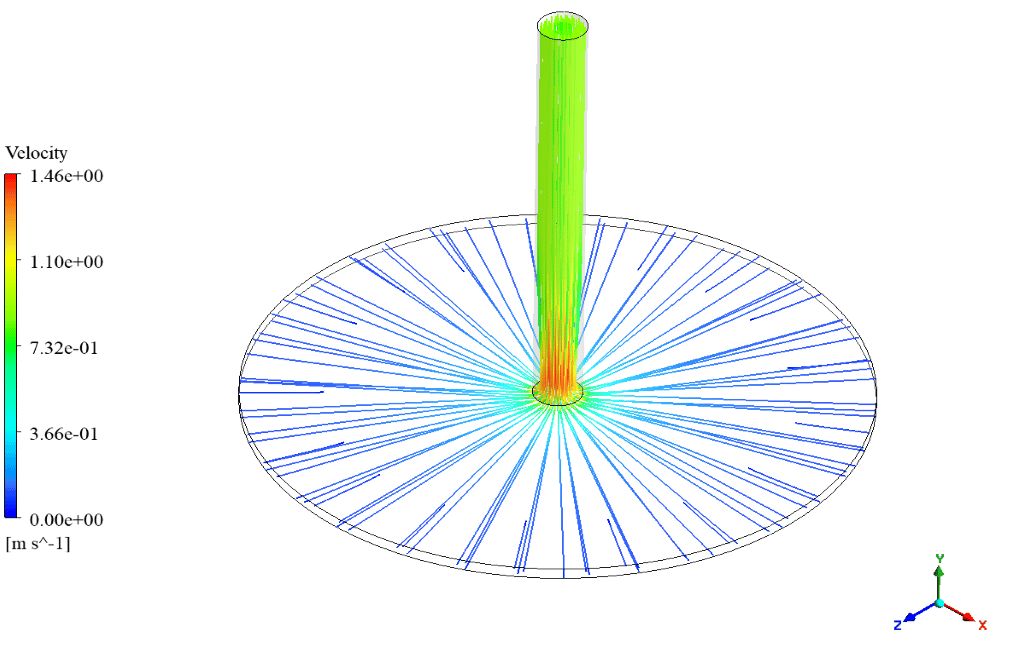




Dr. Tatum Kuhic Sr. –
The training was a wonderful primer into understanding solar chimneys and their functionality. The explanations of natural convective mechanisms and the illustrated results enhanced my grasp of the heat transfer process. Well-structured content!
MR CFD Support –
Thank you so much for your kind words! We’re thrilled that you found the solar chimney project as informative and helpful for understanding natural convection heat transfer. Your feedback is greatly appreciated and motivates us to continue providing high-quality training materials.
Rita Bins –
The explanation of the natural convection in the solar chimney is intriguing! Learning how buoyancy affects air movement in these structures is particularly useful for my sustainable design projects.
MR CFD Support –
Thank you for the positive feedback on our Natural Convection Solar Chimney simulation training. We are delighted to hear that the project’s focus on buoyancy force and its effects on air movement has been beneficial to your sustainable design endeavors. If you have any more questions or need further assistance with your projects, feel free to reach out to us.
Prof. Adelle Yost –
The ANSYS Fluent solar chimney simulation results were impressive – how significant is the effect of the absorber’s heat flux on the overall efficiency of the solar chimney? Can this heat flux value be adjusted to model different climate conditions or chimney designs?
MR CFD Support –
Thank you for your positive feedback! The absorber’s heat flux plays a crucial role in driving the natural convection inside the solar chimney as it directly influences the temperature gradient. This temperature gradient is responsible for creating buoyancy-driven flow. To answer your question – yes, the heat flux can be adjusted to simulate varied climatic conditions or to assay different solar chimney configurations. It’s one of the key parameters that define the system’s efficiency and behavior under different operational circumstances.
Natasha Berge –
I’ve noticed a remarkable improvement in regulating the temperature of our building using the principles learned from the Natural Convection Solar Chimney Fluent Training. The way the course handles complex concepts, such as buoyancy forces in natural convection, is straightforward and illuminating. It’s facilitated an easier adoption of solar chimneys in our projects for energy efficiency.
MR CFD Support –
Thank you for your positive feedback! We are thrilled to hear that our Fluent Training on Natural Convection Solar Chimney has been instrumental in enhancing the energy efficiency of your building projects. Understanding the impact of buoyancy forces is crucial, and we’re glad our course made the concepts approachable. Your success with implementing solar chimneys is exactly the outcome we aim for with our training materials!
Ms. Pearline Yost DVM –
The product detailing the natural convection solar chimney simulation was extremely detailed and informative. The methodology applied in simulation conducted by MR CFD improved my understanding of energy-efficient building design significantly. What I found most beneficial was the practical demonstration of buoyancy impact on natural convection through the well-illustrated results. Mastery of such passive heating and cooling systems that are critical for sustainable architecture is now within my grasp thanks to this training!
MR CFD Support –
We’re delighted to hear that our Natural Convection Solar Chimney project was able to enhance your understanding and skills in the area of sustainable building design. Thank you for your positive feedback and for acknowledging the quality and detail of our teaching materials! If you have any further questions or need additional resources to continue learning, don’t hesitate to reach out.
Sally Turcotte –
I just finished the Natural Convection Solar Chimney training course and it’s fantastic! The explanation of the role buoyancy forces play in natural convection is really insightful and I appreciate the detailed results that are included in the course materials.
MR CFD Support –
Thank you for your wonderful feedback! We’re delighted to hear that the course on Natural Convection Solar Chimney added to your understanding of buoyancy forces and natural convection. We always strive to provide detailed and comprehensive results to assist with learning concepts more clearly. If you have any further questions or need more insight on this topic or others, do not hesitate to reach out. Happy learning!